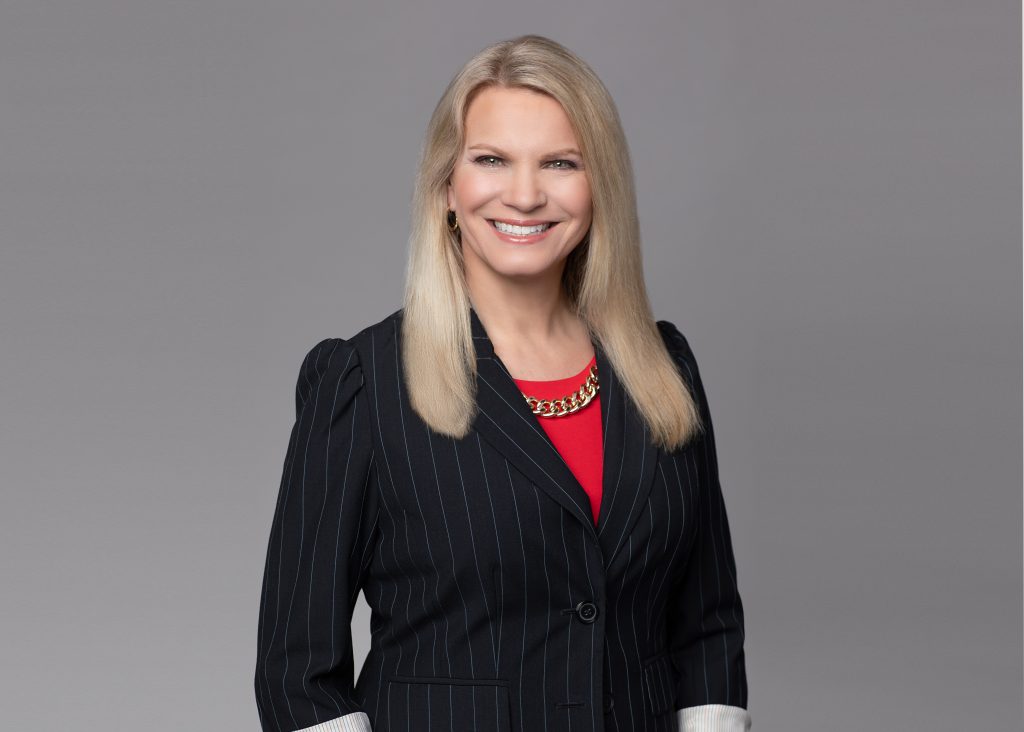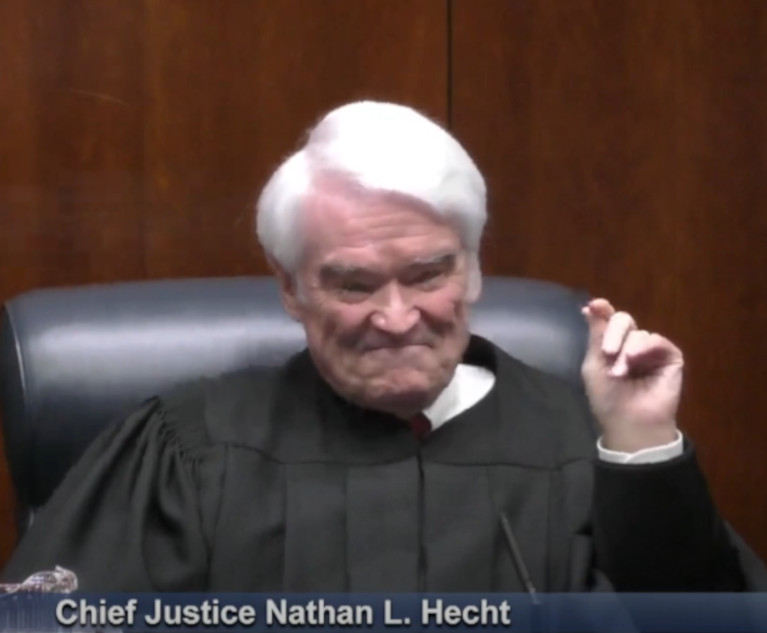Best Practices in May 2020 for Business Immigration Laws Affected by the COVID-19 Virus Emergency
As events and rules are changing daily with respect to COVID-19. In February, we thought the worst thing to happen this year would be the new H-1B Cap Registration process. Little did we know that this pandemic would create uncertainty throughout the immigration landscape, says Julia L. Stommes, an immigration attorney of counsel for Fragomen.
March 27, 2020 at 05:31 PM
6 minute read
 Julia L. Stommes for Fragomen, Del Rey, Bernsen & Loewy. (Courtesy Photo)
Julia L. Stommes for Fragomen, Del Rey, Bernsen & Loewy. (Courtesy Photo)
As I am working from home on this day in late March, I am trying to predict what immigration attorneys and in-house counsel will need to do when they read this article, as events and rules are changing daily with respect to COVID-19. In February, we thought the worst thing to happen this year would be the new H-1B Cap Registration process. Little did we know that this pandemic would create uncertainty throughout the immigration landscape.
Hopefully we are on our way back to "normal." If not, the time frames to the following items may most likely have been extended. Regardless, the best practices we've outlined below should be the same and should still require your attention in May:
- Department of Homeland Security (DHS) and I-9 Forms
During the "Covid-19 Emergency," the DHS announced it would loosen some of its normal "in-person" requirements of reviewing identity and employment authorization documentation for new hires or current employees needing employment reverification. The DHS announced the following:
- When an employee is working remotely because of the COVID-19 emergency, an employer may inspect the employee's identity and employment authorization documents virtually using remote technology (i.e., video, fax or email) when completing Section 2 of the I-9 Form, or when completing Section 3 for I-9 reverifications. The employer should retain copies of the documents and follow normal I-9 completion time frames (i.e., Section 1 must be completed by the employee's first day of work and Section 2 must be completed within 3 business days of the new hire's start date);
- When normal operations resume, which the DHS defined as 60 days from issuance of these interim guidelines or until three days after the national emergency is over, whichever comes first, employers will need to physically inspect documents for all employees onboarded and I-9'd remotely during this time frame. Employers should enter "COVID-19" as the reason for the physical inspection delay in the Section 2 additional information field. Once the documents have been physically inspected, the employer also should add "documents physically examined" with the date of the inspection to the Section 2 additional information field or in Section 3 for reverifications; and
- These interim COVID-19 emergency measures cannot be used if these new hires or current employees are physically present at the normal work location. An employer must follow all standard I-9 procedures in this circumstance. However, if the new hires and/or employees become subject to a COVID-19 quarantine or lockdown protocol during these I-9 time frames, the DHS may accept the employer's use of the remote procedures, but these cases will be evaluated on a case-by-case basis.
BEST PRACTICE: The DHS announced these interim guidelines March 20. So, if the national emergency has not been declared over prior to this publication, be sure to inform your clients or your employer to resume normal in-person review of I-9 Forms starting May 19. Also, if your clients and/or employer were unaware of these interim guidelines, advise them to do an I-9 audit of any employees hired or reverified during this time frame and correct the I-9s with the information above with the current date.
- Department of Labor (DOL) Interim Guidelines
Like the DHS, the DOL announced interim guidelines to help employers with Labor Condition Application (LCA) and Labor Certification Application requirements. The DOL announced the following:
- Employers will have until May 12 to respond to any DOL inquiries regarding prevailing wage determinations and labor certification applications for any request with a deadline falling between March 13 and May 12;
- During the COVID-19 emergency, the DOL is allowing employers up to 30 calendar days to post the notice of filing of a LCA AFTER an employee in H-1B, H-1B1 or E-3 status has started working at a new worksite location. This timing differs from the regulations, which require the notice of filing of a LCA to be done before the worker changes worksite locations. This 30-calendar-day extension is to help employers with an approved LCA to move its workers to an unintended worksite, including the worker's home, without needing to file a new LCA, provided that the new worksite location is within the same area of intended employment (i.e., the same metropolitan statistical area and/or within normal commuting distance) of the employee's primary worksite location. This 30-calendar-day posting will not work, however, if the employee's home worksite is not within the same area of intended employment. If the employee's home worksite is in a different metropolitan statistical area or not within normal commuting distance of his/her primary worksite location, the employer needs to file a new LCA and amended H-1B Petition for this new worksite location; and
- The DOL has agreed to extend the normal 180-day program electronic review management (PERM) recruitment window by 60 days for all filings that occur by May 12. Under this extension, the DOL will accept PERM filings where recruitment efforts began no more than 240 days before filing, provided that the recruitment was initiated between Sept. 15, 2019, and March 13 and the ultimate PERM filing occurs by May 12.
BEST PRACTICE: Advise your clients and/or employer to do an audit of any H-1B, H-1B1 and E-3 employees who had to switch to working from home during the COVID-19 Emergency. Your clients and/or employer will need to check the home addresses of these employees to ensure he/she lived within the area of intended employment listed on their LCA. If the employee's home worksite is within normal commuting distance of his/her primary worksite listed on the LCA, be sure to advise your client and/or employer to post a notice of filing of LCA at the employee's home worksite as soon as possible for 10 calendar days. If your client and/or employer discovers that the employee's home worksite is not within the normal commuting distance, you should advise your client and/or employer to initiate a new LCA filing and amended H-1B Petition filing as soon as possible.
Julia L. Stommes is of counsel for Fragomen. She has practiced business immigration law for more than 25 years, counseling clients, ranging from start-ups to Fortune 1000 companies, on all aspects of business immigration, with a focus on E-2 investor visas and O-1 extraordinary ability visas for entrepreneurs. She can be reached at [email protected].
This content has been archived. It is available through our partners, LexisNexis® and Bloomberg Law.
To view this content, please continue to their sites.
Not a Lexis Subscriber?
Subscribe Now
Not a Bloomberg Law Subscriber?
Subscribe Now
NOT FOR REPRINT
© 2025 ALM Global, LLC, All Rights Reserved. Request academic re-use from www.copyright.com. All other uses, submit a request to [email protected]. For more information visit Asset & Logo Licensing.
You Might Like
View All
ExxonMobil Sues California AG Bonta, Environmental Groups for Advanced Recycling 'Smear Campaign'

2 Judges: Meet the New Chief Justice and the GC Who Just Rose to the Bench
3 minute read

Law Firms Mentioned
Trending Stories
- 1'It's Not Going to Be Pretty': PayPal, Capital One Face Novel Class Actions Over 'Poaching' Commissions Owed Influencers
- 211th Circuit Rejects Trump's Emergency Request as DOJ Prepares to Release Special Counsel's Final Report
- 3Supreme Court Takes Up Challenge to ACA Task Force
- 4'Tragedy of Unspeakable Proportions:' Could Edison, DWP, Face Lawsuits Over LA Wildfires?
- 5Meta Pulls Plug on DEI Programs
Who Got The Work
Michael G. Bongiorno, Andrew Scott Dulberg and Elizabeth E. Driscoll from Wilmer Cutler Pickering Hale and Dorr have stepped in to represent Symbotic Inc., an A.I.-enabled technology platform that focuses on increasing supply chain efficiency, and other defendants in a pending shareholder derivative lawsuit. The case, filed Oct. 2 in Massachusetts District Court by the Brown Law Firm on behalf of Stephen Austen, accuses certain officers and directors of misleading investors in regard to Symbotic's potential for margin growth by failing to disclose that the company was not equipped to timely deploy its systems or manage expenses through project delays. The case, assigned to U.S. District Judge Nathaniel M. Gorton, is 1:24-cv-12522, Austen v. Cohen et al.
Who Got The Work
Edmund Polubinski and Marie Killmond of Davis Polk & Wardwell have entered appearances for data platform software development company MongoDB and other defendants in a pending shareholder derivative lawsuit. The action, filed Oct. 7 in New York Southern District Court by the Brown Law Firm, accuses the company's directors and/or officers of falsely expressing confidence in the company’s restructuring of its sales incentive plan and downplaying the severity of decreases in its upfront commitments. The case is 1:24-cv-07594, Roy v. Ittycheria et al.
Who Got The Work
Amy O. Bruchs and Kurt F. Ellison of Michael Best & Friedrich have entered appearances for Epic Systems Corp. in a pending employment discrimination lawsuit. The suit was filed Sept. 7 in Wisconsin Western District Court by Levine Eisberner LLC and Siri & Glimstad on behalf of a project manager who claims that he was wrongfully terminated after applying for a religious exemption to the defendant's COVID-19 vaccine mandate. The case, assigned to U.S. Magistrate Judge Anita Marie Boor, is 3:24-cv-00630, Secker, Nathan v. Epic Systems Corporation.
Who Got The Work
David X. Sullivan, Thomas J. Finn and Gregory A. Hall from McCarter & English have entered appearances for Sunrun Installation Services in a pending civil rights lawsuit. The complaint was filed Sept. 4 in Connecticut District Court by attorney Robert M. Berke on behalf of former employee George Edward Steins, who was arrested and charged with employing an unregistered home improvement salesperson. The complaint alleges that had Sunrun informed the Connecticut Department of Consumer Protection that the plaintiff's employment had ended in 2017 and that he no longer held Sunrun's home improvement contractor license, he would not have been hit with charges, which were dismissed in May 2024. The case, assigned to U.S. District Judge Jeffrey A. Meyer, is 3:24-cv-01423, Steins v. Sunrun, Inc. et al.
Who Got The Work
Greenberg Traurig shareholder Joshua L. Raskin has entered an appearance for boohoo.com UK Ltd. in a pending patent infringement lawsuit. The suit, filed Sept. 3 in Texas Eastern District Court by Rozier Hardt McDonough on behalf of Alto Dynamics, asserts five patents related to an online shopping platform. The case, assigned to U.S. District Judge Rodney Gilstrap, is 2:24-cv-00719, Alto Dynamics, LLC v. boohoo.com UK Limited.
Featured Firms
Law Offices of Gary Martin Hays & Associates, P.C.
(470) 294-1674
Law Offices of Mark E. Salomone
(857) 444-6468
Smith & Hassler
(713) 739-1250






